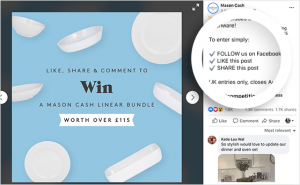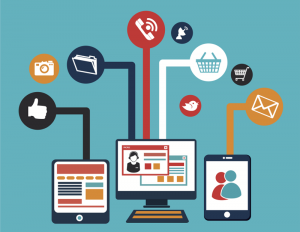Marketing personalization isn’t personal and it never has been. It involves segmenting audiences through demographic, behavioral or affinity data and broadcasting messages relevant to these smaller segments and their actions. It’s not one-to-one, reactive or real-time. But Facebook Messenger is changing this.
Facebook Messenger ads
Facebook introduced Messenger ads at the end of 2016 and expanded the offering recently. Traditionally Facebook ads aim to engage someone with a piece of content on Facebook or send them to a destination such as your website or app. Facebook Messenger ads however, send people to the Messenger app where you can start a conversation with them.
As soon as someone clicks your ad and engages with you via Facebook Messenger, you have the ability to message them again and with 66 percent of consumers preferring to reach brands through messaging apps, this provides a vital entry point.
But while proactively initiating one-to-one conversations with customers is great in theory, in reality, it’s not scalable for any business without a huge sales and support team. Right?
Chatbots
Through natural language processing chatbots can automate conversations that follow predictable patterns. Define the questions and answers, and you can create personalized conversations with your customers in real-time. It sounds complex and expensive but many companies offer monthly subscriptions based on how many messages you send — with initial tiers costing nothing. This enables you to start by running small, controlled tests for no cost.
What does this have to do with Facebook Messenger ads? Powering your Messenger conversations with a chatbot will give you the ability to scale — conducting hundreds of direct conversations a day — however limited your resources.
With that in mind, here are three ideas you can try for your first Facebook Messenger campaign.
Awareness campaigns
Let’s start with something easy — distributing your content. If you engage in content marketing you likely distribute that content via email. That’s great, but click through rates have been declining for a long time. So try distributing your content via Facebook Messenger as well.
It’s simple — instead of someone opting in by providing their email on your website, they opt-in by replying to your Facebook Messenger ad. Use a chatbot to ask questions about their content preferences and set up distribution of your content via Messenger.
Once you’ve got someone in your marketing funnel you can distribute more specific content or start conversations with them based on how they engage with you. Someone regularly clicks links to your content via Messenger? Follow up with exclusive content, offers or conversations.
Engagement campaigns
Most customer journeys aren’t simple. They involve multiple touchpoints and opportunities for prospects to become disengaged, distracted and drop out. So find out why this is happening.
Use Facebook Messenger ads to engage people who are dropping out of your nurture stream by initiating a conversation to find out their pain points. It’s possible that they simply can’t find the information they require to progress down your funnel, although you have that content readily available for them on your website.
This is where natural language processing of chatbots becomes a great strength. You can create automated answers to specific themes of questions, the chatbot will recognise multiple variations of these and deliver the most relevant content to users. This is a great way to reactivate customers.
Conversion campaigns
Retargeting users at the bottom of your funnel is something you likely do already. If not, you can start doing this by using combinations of Facebook custom audiences to identify users who have begun a checkout or conversion procedure but not completed it. Instead of running a tired display retargeting ad try Facebook Messenger instead.
Run a campaign that sends these users to Facebook Messenger to receive a discount code. Once they have interacted with this message you’ll be able to send follow ups such as recommending related products, seasonal promotions or new product lines.
Don’t forget with all these conversations to make them personal. Utilize Facebook’s own attributes not just to target your advertisements but also, for example, to address customers by their first name once you’ve engaged them in a conversation.
The future
Messenger conversations are just the start for personalization. From the potential of voice activated chatbots that engage with customers on Amazon Echo and Google Home to personalized company avatars interacting with customers in Augmented Reality and Virtual Reality, one thing is for sure — people will expect one-to-one experiences. The wheels are in motion and cannot be arrested. If you want to delight customers, it’s time to get personal.
Digital & Social Articles on Business 2 Community(50)
Report Post





